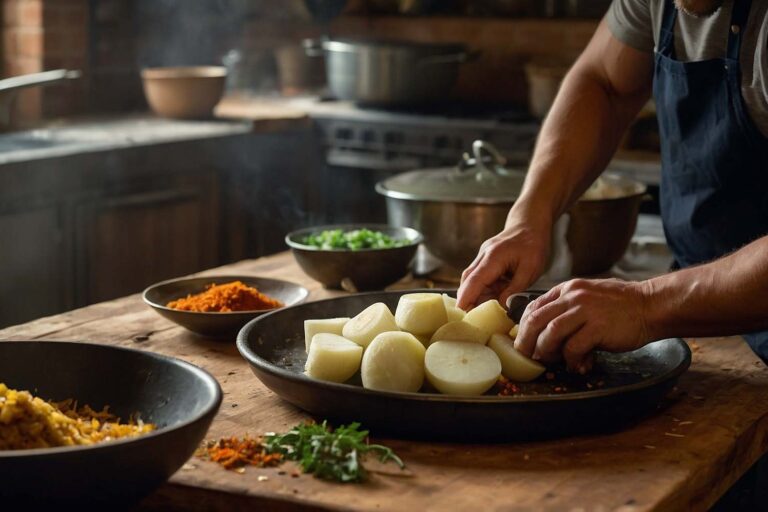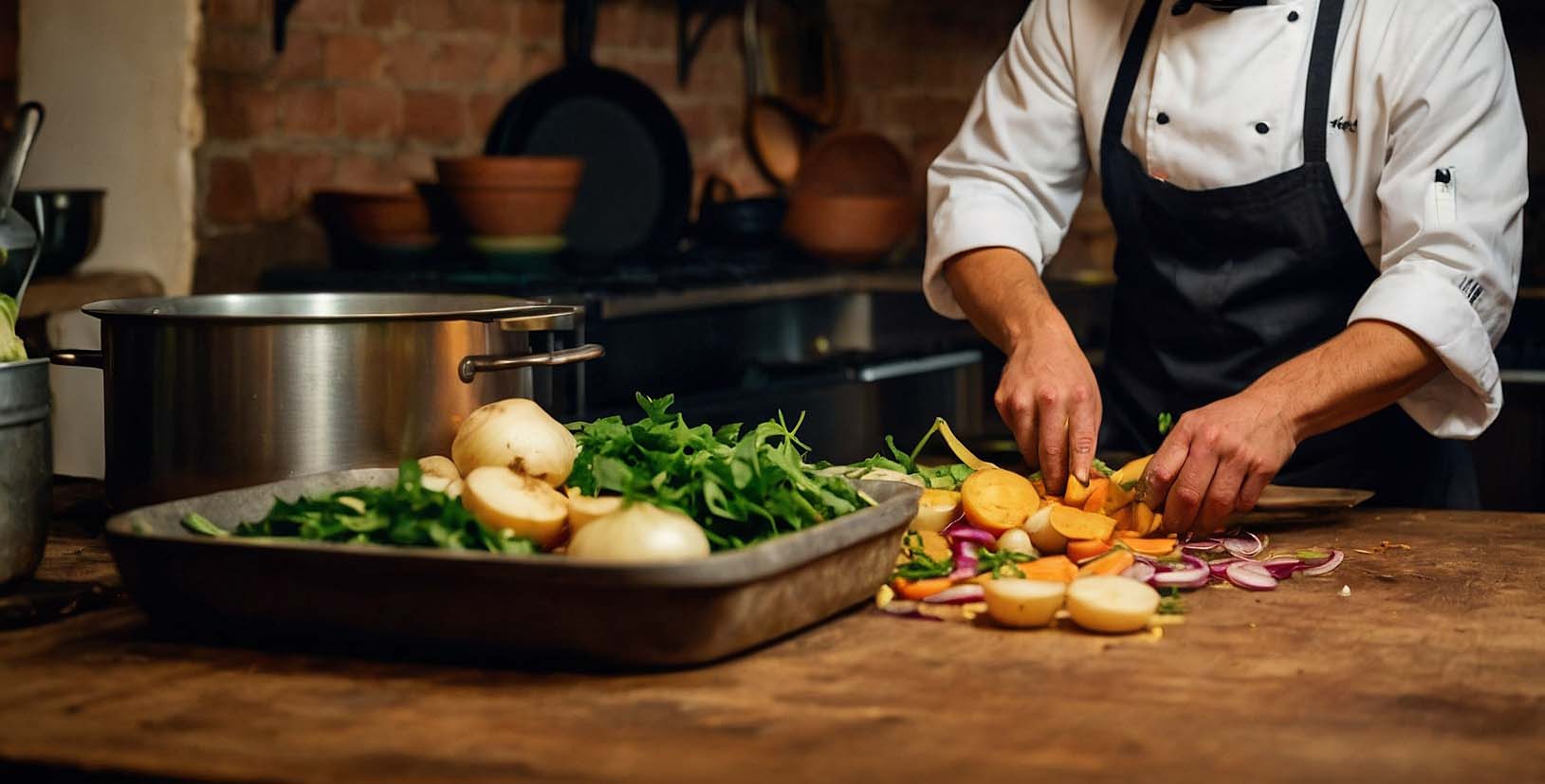Rutabaga and turnip recipes often feature roasting, mashing, or stewing these hearty root vegetables. Whether combined or cooked separately, they offer a nutritious and flavorsome addition to meals.
Rutabagas and turnips, often unsung heroes of the vegetable world, can bring a touch of earthy sweetness to your dinner table. These robust roots are rich in vitamins and fiber, making them a healthy choice for those seeking to add more vegetables to their diet.
The Unsung Heroes of the Root World

Rutabagas and turnips often linger in the shadows of their popular cousins like carrots and potatoes. Yet, these humble roots pack a punch of flavor and nutrition that deserves a spotlight. Explore recipes that showcase their earthy goodness and transform your meals with these underrated gems.
Distinguishing Rutabagas from Turnips
Rutabagas and turnips may look similar, but they have distinct differences. Rutabagas are larger, with a purple and yellow hue, while turnips are white and purple. The flavor of rutabagas is sweeter, especially when cooked, whereas turnips offer a peppery bite.
Nutritional Profiles Worth Noting
Both these root vegetables are nutritional powerhouses, rich in vitamins and minerals. Here’s a quick comparison:
| Nutrient | Rutabaga | Turnip |
|---|---|---|
| Vitamin C | High | Moderate |
| Fiber | Good Amount | Good Amount |
| Potassium | Moderate | High |
| Calories | Low | Very Low |
Both rutabagas and turnips can be roasted, mashed, or tossed into stews. They are versatile and can invigorate any dish with texture and depth of flavor.
Select and Store for Freshness
Exploring the realm of root vegetables brings us to rutabagas and turnips, delightful additions to any meal. Both are packed with nutrients and flaunt a versatile palette of flavors. To enjoy their full benefits, selecting fresh vegetables and proper storage is key. Freshness ensures taste and nutrient retention, making the ‘Select and Store for Freshness’ step crucial.
Picking the Best Rutabagas and Turnips
Focus on these points to choose the best:
- Look for smooth skin: Avoid rutabagas and turnips with bruises or cracks.
- Firm to touch: They should feel dense and hard.
- Check the color: Choose turnips that are white at the bottom and purple or green at the top.
- Size matters: Smaller ones are usually sweeter and tender.
- Leafy greens: If greens are attached, they should look fresh and vibrant.
Storage Tips to Maximize Freshness
Follow these tips to extend freshness:
- Remove greens: Cut off the leafy tops to prevent moisture loss.
- Clean them: Wipe off any dirt but avoid washing until ready to use.
- Keep them cool and dark: Store in a ventilated bag in the crisper drawer of your fridge.
- Humidity is key: Maintain moderate humidity in the storage area.
- Avoid Ethylene producers: Don’t store with apples, bananas, or tomatoes to prevent premature spoiling.
Storing rutabagas and turnips correctly will maintain their freshness for weeks. Always inspect them periodically and use the ones starting to soften first.
Learn more: How Long Do Turnips Last at Room Temperature
Prep School: Getting Vegetables Recipe-ready
Welcome to your essential guide for transforming rutabagas and turnips into mealtime stars! Simple prep is the secret to enhancing their flavors. This post walks you through every step, ensuring these hearty roots shine in your recipes.
Cleaning and Cutting Basics
Clean well before cooking to remove dirt. Scrub the skins with a vegetable brush under running water.
Slice off the ends, peel thickly, and chop into even pieces. This ensures they cook uniformly.
- Rutabagas can be waxed; remove wax with peeling.
- Small turnips are tender; keep their skins if you like.
- Cut into cubes for roasts or thin slices for stews.
Blanching: A Pre-cooking Game Changer
Blanching is briefly boiling vegetables before the final cook. It enhances color, flavor, and texture.
- Bring a pot of salted water to a boil.
- Add the vegetable pieces for a few minutes.
- Dunk them in ice water to stop cooking.
Now they’re ready for roasting, mashing, or sautéing. Plus, they stay vibrant on your plate.
Classic and Creative Recipes to Savor
Rutabagas and turnips, those cozy winter staples, are stepping into the spotlight. There’s a world of flavor waiting in these humble roots. Let’s explore classic and creative ways to transform them into delectable dishes.
Roasted Roots With A Twist
Roasting is a perfect way to sweeten the natural flavors of rutabagas and turnips. It lends a caramelized edge to their hearty textures. Don’t just roast them, however! Infuse your root vegetables with bold spices or combine them with other winter favorites for a multifaceted treat.
- Honey and Thyme: Drizzle honey and sprinkle fresh thyme before roasting.
- Balsamic and Garlic: Toss with balsamic vinegar and minced garlic for a zesty kick.
- Maple and Nutmeg: A dash of maple syrup and a sprinkle of nutmeg add warm sweetness.
Tip: Cut the veggies in similar sizes for even cooking.
Mashing Up Traditions: Rutabaga-turnip Mash
Mashing pairs the creaminess of potatoes with the robust flavors of rutabagas and turnips. It’s perfect for a comforting meal. This hearty mash gives a nod to tradition while providing a delightful twist to the dinner table.
- Boil equal parts rutabaga and turnip until tender.
- Drain and mash with butter, cream, and a pinch of salt.
- Add chives or parsley for a fresh note.
Pro Tip: For extra smoothness, pass the mash through a fine sieve.
Enjoy these dishes as a side or transform them into the main event. The versatility of rutabagas and turnips knows no bounds. They’re not just for grandma’s kitchen anymore; they fit right in with the modern palate, eager for a taste of classic comfort with a creative twist.
Soup’s On! Heartwarming Winter Dishes
As the chill of winter wraps the world in a frosty hug, it’s time to turn to comfort foods warm enough to thaw the coldest of days. Soups with rich flavors and nourishing ingredients take center stage, offering both solace and satisfaction. Among these, rutabaga and turnip soups stand out with their earthy sweetness and hearty textures, perfect for cozy evenings by the fire.
Rutabaga and Turnip Soup Essentials
The foundation of any great rutabaga and turnip soup starts with the right ingredients. Gather your fresh rutabagas and turnips, ensuring they’re peeled and diced for even cooking.
- Aromatic vegetables like onions and garlic
- Quality stock – chicken or vegetable for a flavorful base
- Cream or coconut milk for a touch of richness
Combine in a pot and simmer until the vegetables are fork-tender. Puree for a smooth texture, and season according to your palate.
Elevating Your Soup with Herbs and Spices
To transform a simple soup into a culinary masterpiece, integrate a harmonious blend of herbs and spices.
| Herb/Spice | Flavor Profile |
|---|---|
| Thyme | Earthy and floral |
| Rosemary | Woodsy and pine-like |
| Sage | Slightly peppery |
| Nutmeg | Warm and nutty |
Add your selection while the soup simmers to infuse depth of flavor. A final garnish of fresh parsley or chives adds a pop of color and freshness just before serving your warming winter dish.
Conclusion
Exploring the versatility of rutabagas and turnips leads to endless culinary delights. These root vegetables enrich meals with robust flavors and nutritional benefits. Embrace the comfort they bring to your table through our creative, easy-to-follow recipes. Now, it’s your turn to whip up these hearty dishes and savor the warmth each bite offers.
Ready to impress your taste buds? Dive into the world of rutabagas and turnips and let the cooking adventures begin. See all in at Farm Pioneer for knowledge based for Turnips.
